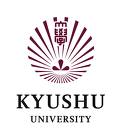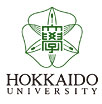Copyright and New Reproduction and Dissemination Technologies
Technology Providers as New Old Actors in the Institutional Turn within Copyright Law in the Digital Environment
Abstract
The history of copyright law is intertwined with the progress in technologies which can be used for reproduction and dissemination of copyrighted works for commercial or non-commercial purposes. The introduction of printing press led to the creation of copyright law in order to protect legitimate interests of authors, printers and binders against selling unauthorized editions of their protected manuscripts by third parties. Later, the invention of various recording and broadcasting technologies brought granting then traditional copyright holders—printing houses—with new types of exclusive rights, and creating a new group of right holders––record labels, studios and broadcasting companies granted with new types of neighboring rights. Since the middle of twentieth century, the advent of numerous analogue consumer electronics allowing their users to reproduce or distribute copyrighted works for their private non-commercial purposes has considerably changed the balance between the interests of conventional stakeholders in copyright protection. Nevertheless, new digital reproduction and dissemination technologies allow re-striking the balance between the interests of concerned stakeholders in any direction—either in favor of strengthening the protection of copyright holders or broadening the possibilities of using copyrighted works by their consumers for private non-commercial purposes without any authorization obtained from the concerned copyright holders.
This Paper examines the role of technology providers as new old actors in the three recent institutional turns within copyright law and its enforcement in the digital environment. First, many international technical standards for reproduction or dissemination technologies, e.g. CD, DVD or Blu-Ray Disc technologies, have incorporated various proprietary technologies, including digital rights management technologies, on the expense of other creators, technology providers and consumers. Second, many countries around the world have adopted or are currently planning to adopt so-called three strike rules requiring the internet service providers to disconnect frequent copyright infringers from the internet upon three allegations made by copyright holders. In some countries, such as Belgium, the courts have gone even farther and have already imposed on the internet service providers various duties to monitor their networks in order to prevent acts of copyright infringement committed by their internet users. Finally, some internet service providers, especially those from the U.K., have recently entered into agreements with major record labels to allow unrestricted use of copyrighted works by their premium internet users on exchange for vigilant monitoring of unauthorized sharing and distribution of copyrighted works by the internet service providers within and from their networks. This Paper enquires into the interaction between individual institutions and norms within all three institutional turns within copyright law and its enforcement in the digital environment, and their impacts on copyright law and behavior of individual stakeholders at the present and in the future.
![]() Conference Paper
Conference Paper
• Prof. Peter Drahos
• Prof. Yoshiyuki Tamura
• Prof. Thomas Hoeren
• Prof. Branislav Hazucha
• Prof. Ryu Kojima
• Ms Zheng Zhong
• Prof. Shinto Teramoto
• Prof. Peter K. Yu
• Prof. Nari Lee
• Prof. Shamnad Basheer
• Ms Chonticha Sae Lim
• Prof. Pedro A. De Miguel Asensio
• Prof. Jacques de Werra
• Prof. Rong-Chwan Chen
• Mr Paul Jurčys


